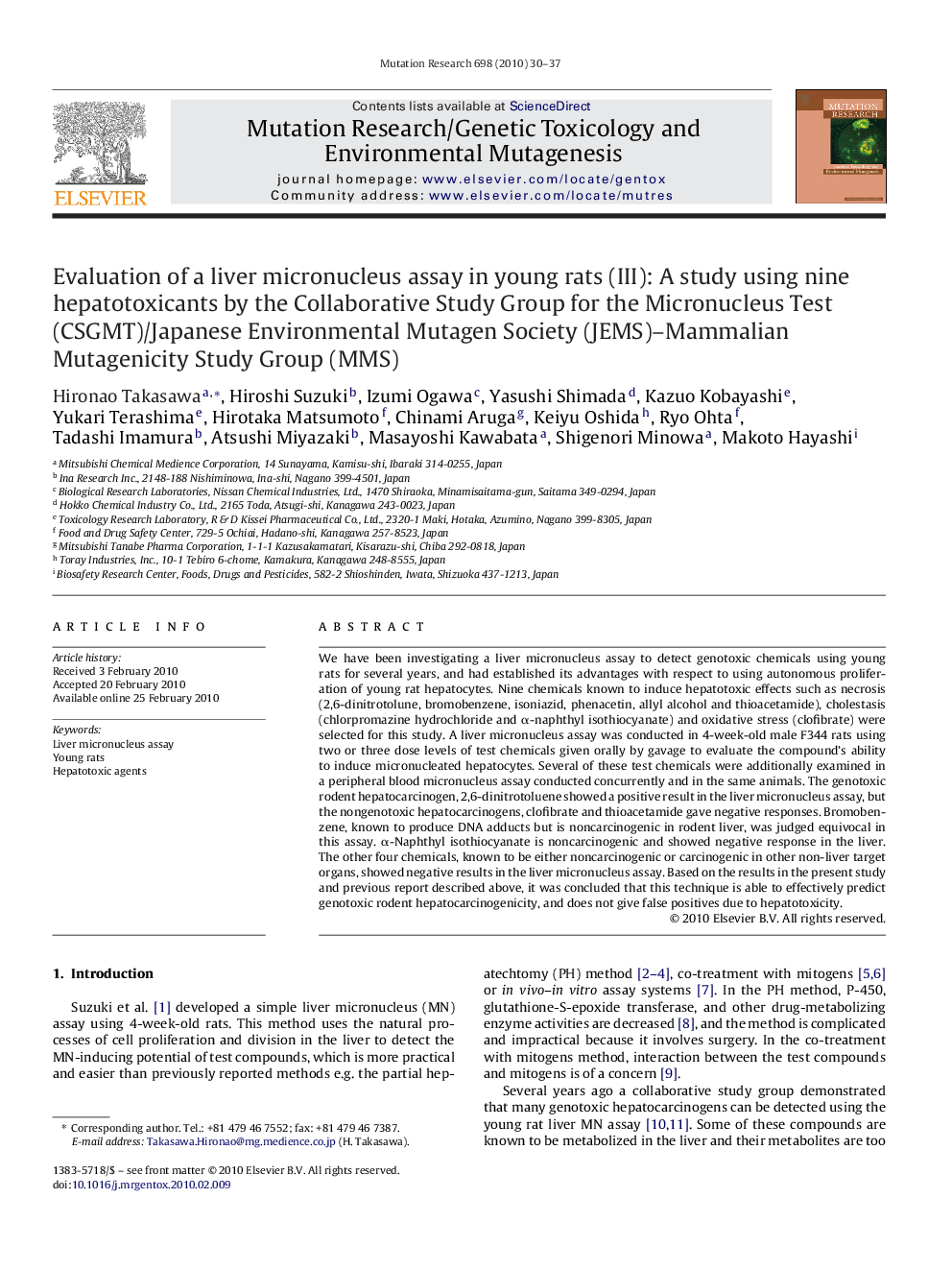| Article ID | Journal | Published Year | Pages | File Type |
|---|---|---|---|---|
| 2148519 | Mutation Research/Genetic Toxicology and Environmental Mutagenesis | 2010 | 8 Pages |
We have been investigating a liver micronucleus assay to detect genotoxic chemicals using young rats for several years, and had established its advantages with respect to using autonomous proliferation of young rat hepatocytes. Nine chemicals known to induce hepatotoxic effects such as necrosis (2,6-dinitrotolune, bromobenzene, isoniazid, phenacetin, allyl alcohol and thioacetamide), cholestasis (chlorpromazine hydrochloride and α-naphthyl isothiocyanate) and oxidative stress (clofibrate) were selected for this study. A liver micronucleus assay was conducted in 4-week-old male F344 rats using two or three dose levels of test chemicals given orally by gavage to evaluate the compound's ability to induce micronucleated hepatocytes. Several of these test chemicals were additionally examined in a peripheral blood micronucleus assay conducted concurrently and in the same animals. The genotoxic rodent hepatocarcinogen, 2,6-dinitrotoluene showed a positive result in the liver micronucleus assay, but the nongenotoxic hepatocarcinogens, clofibrate and thioacetamide gave negative responses. Bromobenzene, known to produce DNA adducts but is noncarcinogenic in rodent liver, was judged equivocal in this assay. α-Naphthyl isothiocyanate is noncarcinogenic and showed negative response in the liver. The other four chemicals, known to be either noncarcinogenic or carcinogenic in other non-liver target organs, showed negative results in the liver micronucleus assay. Based on the results in the present study and previous report described above, it was concluded that this technique is able to effectively predict genotoxic rodent hepatocarcinogenicity, and does not give false positives due to hepatotoxicity.
